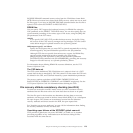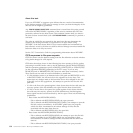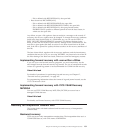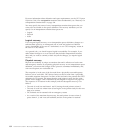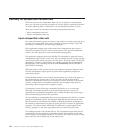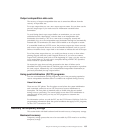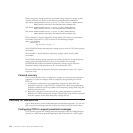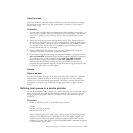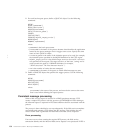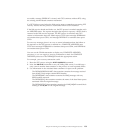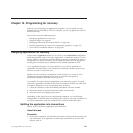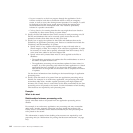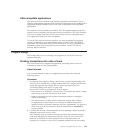
Define temporary storage queues as recoverable using temporary storage model
resource definitions as shown in the following example define statements:
CEDA DEFINE DESCRIPTION(Recoverable TS queues for START requests) TSMODEL(RECOV1)
GROUP(TSRECOV) PREFIX(DF) LOCATION(AUXILIARY) RECOVERY(YES)
CEDA DEFINE DESCRIPTION(Recoverable TS queues for BMS) TSMODEL(RECOV2)
GROUP(TSRECOV) PREFIX(**) LOCATION(AUXILIARY) RECOVERY(YES)
CEDA DEFINE DESCRIPTION(Recoverable TS queues for BMS) TSMODEL(RECOV3)
GROUP(TSRECOV) PREFIX($$) LOCATION(AUXILIARY) RECOVERY(YES)
CICS continues to support temporary storage tables (TST) and you could define
recoverable TS queues in a TST, as shown in the following example:
DFHTST TYPE=RECOVERY,
DATAID=(DF,**,
$$(,character-string)...)
The DATAID DF makes the temporary storage queues used on CICS start requests
recoverable.
The DATAIDs ** and $$ make the temporary storage queues used by BMS
recoverable.
The DATAID character string represents the leading characters of each temporary
storage queue identifier that you want to be recoverable. For example,
DATAID=(R,ZIP) makes recoverable all temporary storage queues that have
identifiers starting with the character “R” or the characters “ZIP”.
For more information on allocation and space requirements, see the CICS System
Definition Guide.
Forward recovery
If you want forward recovery of temporary storage you must provide application
programs to record the changes made to temporary storage during the current
CICS run.
1. At emergency restart time, your application program can then delay the
emergency restart (by using PLTPI, for example) and, again using application
programs, rebuild as much as possible of the temporary storage data using the
records previously read.
2. Repeat the emergency restart but with the system initialization parameters
amended to cold-start temporary storage (TS=(COLD)). Note, however, that this
loses the contents of the entire temporary storage data set.
Recovery for Web services
If your Web services use the WMQ transport and persistent messages, you can use
BTS to ensure that messages are recovered in the event of a CICS system failure.
Configuring CICS to support persistent messages
CICS provides support for sending persistent messages using the WMQ transport
protocol to a Web service provider application that is deployed in a CICS region.
136 CICS TS for z/OS 4.1: Recovery and Restart Guide




